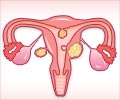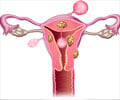- Uterine fibroids are benign tumors composed of muscle and fibrous tissue and one of the most common causes of infertility and pregnancy related complications in women.
- Minimally invasive uterine fibroid embolization (UFE) procedure has proved to be safe and effective in restoring fertility in a majority of women with fibroids.
Why Choose Uterine Fibroid Embolization to Treat Infertility?
Uterine fibroids are one of the most common reasons for infertility in women. Currently, the treatment of fibroids in women who wish to conceive is myomectomy or surgical removal of the fibroid. However, these have been found to be associated with complications that may sometimes necessitate hysterectomy or removal of the uterus. The study was conducted with the purpose of assessing the safety and efficacy of uterine fibroid embolization, a non-surgical procedure to treat infertility in women with uterine fibroids.During the study, the research team assessed the pregnancy rates in 359 women suffering from infertility due to fibroids. They had undergone either a partial or a conventional UFE.
In conventional embolization, all the uterine artery branches are embolized; in a partial UFE, only the small vessels supplying the fibroids are embolized, without affecting the major branches. Understandably, the complications associated with partial UFE are less in comparison to the conventional UFE.
The following were the observations of the study over a six year follow-up period.
- Of the 359 women, 149 or 41.5%, achieved pregnancy one or more times.
- Overall, 131 women gave birth to a total of 150 babies.
- For more than 85% of the women who gave birth, it was their first pregnancy.
- Complications following partial embolization were 14.6% while post conventional UFE the rate of complicaton was 23.1 percent.
- The procedure was repeated in 28 patients in whom the fibroids had not been fully treated, as determined by MRI, and 11 of those patients subsequently became pregnant.
- Before the publication of their study, 12 more pregnancies were reported.
About the Uterine Fibroid Embolization (UFE) Procedure
The UFE or uterine artery embolization procedure is a non-surgical procedure to treat fibroids. It is performed by a radiologist. The uterine artery and its branches are visualized by injection of a contrast dye. Under imaging guidance, an embolic agent composed of small bead like particles is injected into the uterine artery branches to cut off the blood supply of the fibroid and cause it to undergo shrinkage or atrophy.In spite of its non-invasive nature, concerns have been raised about the risk of affecting blood supply to the ovaries and the uterine endometrium. However, a well-trained and skilled doctor can embolize only the uterine artery branches feeding the fibroids. This reduces the incidence of complications.
Conclusion
In conclusion, the study authors opine that in the future, uterine artery embolization could become the first line of treatment in women with multiple or large fibroids, especially since the rate of recurrence following myomectomy is rather high (nearly 60%), making UFE a highly preferred option."In our study there are now almost 200 newborns following UFE," Dr. Pisco said. "Our next step will be a randomized study comparing the results of partial and conventional UFE.
- Uterine artery embolization - (https://medlineplus.gov/ency/article/007384.htm)
















